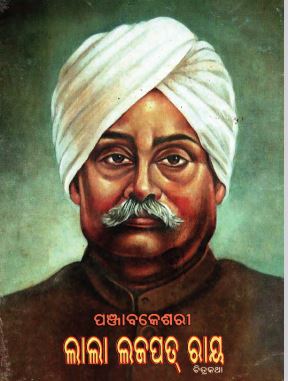In the vast tapestry of India’s struggle for independence, few figures stand out as prominently as Lala Lajpat Rai. Known as the ‘Lion of Punjab,’ Rai left an indelible mark on India’s fight for freedom. This towering figure’s life has been meticulously chronicled in the Odia biography book “Chitrakatha,” authored by Pramod Kumar Mahapatra. The term “Chitrakatha” translates to ‘Picture Story,’ and Mahapatra’s work does full justice to its title, presenting a vivid and enthralling account of Rai’s life, richly illustrated and thoughtfully narrated.
Lala Lajpat Rai was born on January 28, 1865, in Dhudike, a small village in Punjab. His parents, Munshi Radha Krishan Azad and Gulab Devi, were prominent figures in his early life, ingraining in him a deep sense of duty and nationalism. Rai’s childhood was marked by a fervent desire for learning, and his academic brilliance was evident from a young age. His education laid a strong foundation for his future endeavors and his unwavering commitment to the cause of independence.
“Chitrakatha” delves deeply into the formative years of Lala Lajpat Rai, capturing the environment that shaped his early thoughts and beliefs. From his early schooling to his initial encounters with the socio-political conditions of British India, Mahapatra paints a detailed picture of Rai’s childhood. The biography highlights the influence of his parents and his early mentors, who instilled in him the values of resilience, patriotism, and a relentless pursuit of justice. These early years sowed the seeds that would eventually blossom into his lifelong dedication to India’s freedom movement.
One of the most striking features of “Chitrakatha” is its illustrative quality. Mahapatra complements his narrative with intricate illustrations that bring Lala Lajpat Rai’s life to life. The visual depictions serve as a powerful tool, allowing readers to connect more deeply with the historical context and the personal experiences of the freedom fighter. Every chapter is adorned with evocative pictures and sketches that enhance the storytelling, making the biography accessible and engaging for readers of all ages.
The biography also sheds light on the adolescent years of Lala Lajpat Rai, a time when his character truly began to forge itself in the crucible of colonial India. It was during his teenage years that Rai started to see the true extent of British oppression. His exposure to the injustices faced by his fellow countrymen kindled a fire within him, urging him to take a stand.
Mahapatra narrates the pivotal moments of Rai’s adolescence, such as his participation in the Arya Samaj and his early involvement in social reform. These experiences not only honed his leadership skills but also ingrained in him an unflinching determination to fight for India’s independence. The biography captures his internal conflict and steadfast resolve, offering a window into the making of a leader who would go on to inspire millions.
Pramod Kumar Mahapatra’s “Chitrakatha” is more than just a biography; it is a heartfelt tribute to one of India’s greatest freedom fighters. Through its detailed sub-biography, exploration of Rai’s childhood and adolescent years, and compelling illustrations, the book offers readers an intimate glimpse into the life of Lala Lajpat Rai. This Odia biography stands as a testament to the enduring legacy of Rai and his unwavering spirit in the face of adversity, making it a must-read for anyone seeking to understand the heart and soul of India’s independence movement.
Books Info
| Books name | Lala Lajpat Ray, Chitrakatha |
| Author | Pramod Kumar Mahapatra |
| No Of pages | 44 |
| Publisher | Gopabandhu Sahitya Mandira |
| Publication | 2000 |
| Printed At | NA |
| Distributor | NA |

